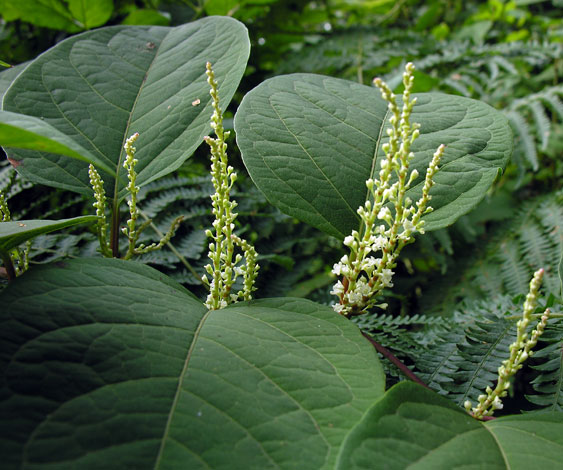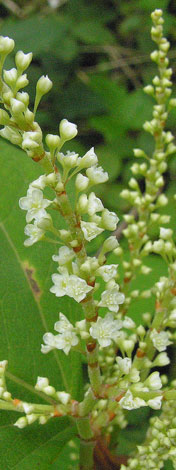Fallopia japonica Japanese Knotweed I


This ornamental plant from Japan was brought to gardens in the 19th century. It was first found in the wild in 1886 and since then the introduction has proved to be a calamitous ecological mistake. This large plant (it can grow to over 2m), which is actually dioecious spreads through fast growing rhizomes. As all the plants in Europe are female, any seed produced doesn't grow pure F. japonica. This doesn't matter though for like many vegetatively reproducing plants, a small part of the rhizome can regenerate a whole plant and very quickly too. It is even able to penetrate tarmac and there is even one photo on the web of a shoot invading someone's dining room!
Small wonder then that this plant is one of the few which is the subject of a banning order in the 1981 Countryside Act of the UK. You may not plant this species anywhere and if soil is removed from land containing Fallopia japonica it has to be treated like a contaminated waste and must be buried no less than 5 feet deep in a special landfill site.
In spite of the fuss it isn't the most widespread plant in the British Isles. Much of the highlands of Scotland, the northern pennines and parts of central Ireland have no records for F. japonica and you can't really miss it when our recording can you? Let's hope it doesn't mutate into an alpine tolerant variety.
The really invasive plants which are a nuisance in parks, gardens, waste places and in all of the British Isles countryside are, as you would expect, natives. Japanese knotweed is no match in invasiveness or persistence for the good old Bramble, Nettle, Ivy or Dock.



